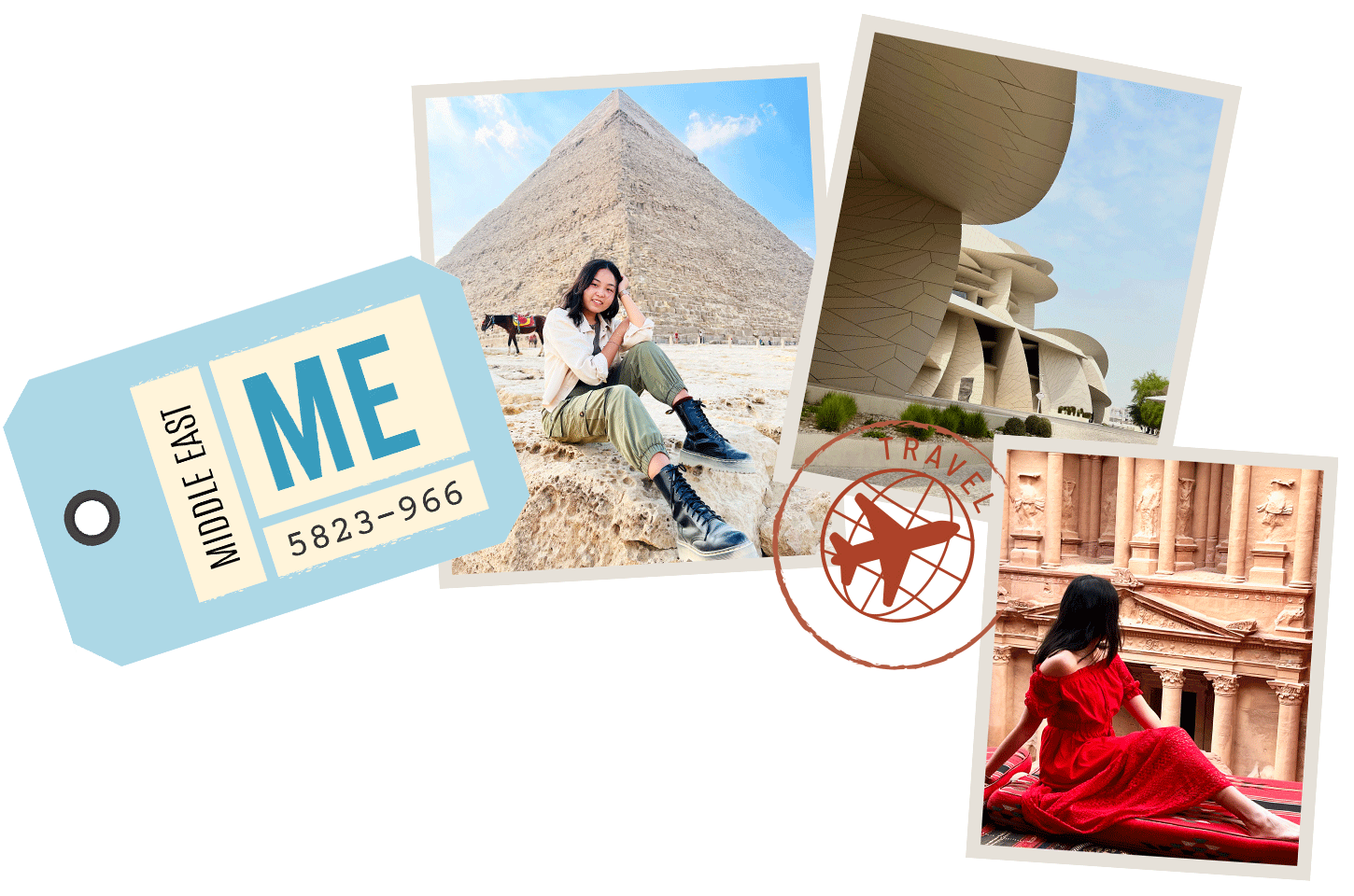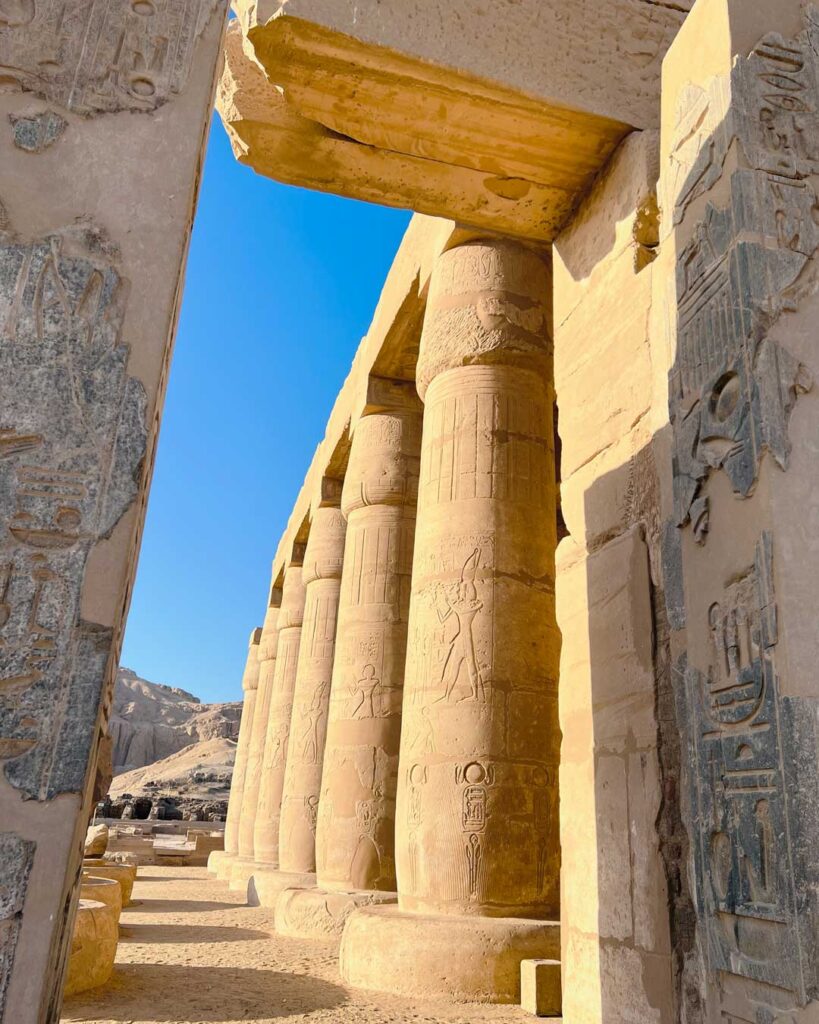
If I had to describe the Middle East with one word, I would say it’s mesmerizing. I mean, you get to experience firsthand the atmospheres described in One Thousand and One Nights (aka Arabian Nights), and you feel like Aladdin might pop up anytime. (Even though Aladdin is not part of the original Nights collection, and, apparently, he was CHINESE! A relative of mine, basically. Ikr?!)
Anyways, let’s cut the crap and start talking about serious sh*t. First of all, whenever I heard about the Middle East, I immediately associated it with camels, deserts, spices, and scorching sun (and terrorism, unfortunately). While that is still (partly) true, after visiting some countries of the region, I can say that the Middle East is way more than that. That is because it’s actually made up of 17 countries including Turkey and Egypt, which all the more so do not fall exactly into the stereotype I’ve just described. And because it is also home to some of the most ancient civilizations which left us with a couple of the Seven Wonders of the World (ancient and modern), and above all, it is home to hummus and falafel and all the rest of the Middle Eastern delicacies. In short, pure bliss.
So far, all of my trips to the Middle East were memorable. I mean, let’s pick Jordan as an example. How can you forget almost falling to your death in Petra or injuring your middle toe in the Dead Sea? Or else, is it possible to simply fail to recall the diverted flight to Amman or the canceled hot air balloon flight in the Wadi Rum? I’m afraid it’s impossible. For this and other 10,000 reasons, I am so much looking forward to having a bunch of new misadventures in the region. And I hope that this guide will encourage you to do the same. Because it’s worth it (the Middle East. And well, also my guide).
The six most spoken languages are Arabic, Persian, Turkish, Kurdish, Hebrew, and Greek. If you had to pick a go-to language, it would be Arabic, but luckily for us, English is widely spoken across the region. So you're good to go. Worst-case scenario, you can use Google Translate. It works wonders.
Every country has its own currency but Euros and US Dollars are quite widely accepted everywhere. Pro tip: check the exchange rates beforehand to avoid scams, as vendors often inflate prices when they're not using the local currency. Also, try to pay the exact amount as many won't give change.
While the voltage of 220 – 240 V and the frequency of 50 Hz (60 Hz in Saudi Arabia) are quite standardized across the region, socket types vary in every country. You can find Type A, B, C, D, E, F, G, or H plugs depending on where you go, so I recommend bringing a universal adapter for your own sanity.
The situation can vary a lot depending on the country you are traveling to. However, as a general rule, there are always ATMs and currency exchange counters at airports, shopping malls, and in larger cities. Remote areas are generally underserved and I would not rely on ATMs. Withdrawal fees vary from country to country and can be very high. Credit cards are quite widely accepted, but always keep some cash on hand for smaller businesses and rural areas.
Luckily, I never had problems accessing internet in the Middle East. While free Wi-Fi might not be readily accessible everywhere, mobile coverage usually works well, except for very rural areas. For this reason, I recommend purchasing a tourist SIM card with a pre-paid package inclusive of data (generally they only work a limited number of days, but you have plenty of GB at very reasonable prices). You can do that as soon as you land directly at the airport.
Let's not beat around the bush. The Middle East is a complex region and safety concerns are more than justified for some of the countries. If I looked at the Global Peace Index (GPI), which is based on levels of ongoing conflict, safety and security, and militarization, I'd rather lock myself into my home and throw away the key. While of course some countries and areas are dangerous to visit or even off-limits (such as Yemen, Syria, or Iraq), media often only tell one side of the story. Chances are that many Middle Eastern countries are actually safer than yours, with basically non-existent crime (ok, maybe not Egypt or Amman in Jordan), and you can feel safe also as a solo female traveler.
The main thing to keep in mind is that many Middle Eastern countries are Muslim, and have conservative laws that reference Sharia. In other words, you might want to reconsider the standards you are used to and act accordingly.
Anything LGBTQ+ is illegal (even cross dressing). But it is also illegal to have heterosexual relationships outside of marriage, or even displaying affection publicly. In a nutshell, my suggestion is to 1) read the specific country's rules, and 2) dress conservatively to err on the side of caution and also as a sign of respect of the culture.
Depending on your destination, the Middle East can be expensive. If you are traveling on a budget, I recommend choosing cheaper countries such as Egypt, or Turkey. While it may seem apparently cheap, Jordan has a strong currency, which makes it as expensive as an average European country. If you're planning a trip there, I suggest you to purchase the Jordan Pass to save money. Gulf countries are generally more expensive, Dubai (UAE) often being the ultimate luxury travel destination.

Spring (March-May), Fall (September-November)
The weather is more pleasant and you won't (likely) have a heatstroke. However, you're not gonna be the only smart kid out there, so account for peak season pricing and larger crowds.
Summer (June-August)
The weather is extremely dry and temperatures are consistently high (40ºC or more). I visited Qatar in late July (apparent temperature: 52ºC), and I think I felt how a popsicle would feel in a summer day. But the upside is that you can have the attractions all for yourself. (And a few fellow brain-deads).
Before planning your trip, check for overlaps with the sacred Muslim month (the dates change each year). That is because normal service operations can be subject to change.
Copyright © 2024 Aurora Zhu
All Rights Reserved